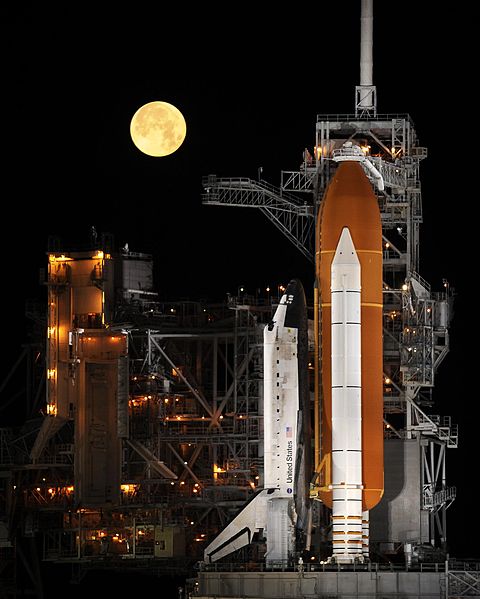Israel’s Probe to reach the Moon
February 24, 2019 | Expert Insights

SpaceIL’s project known as Beresheet will attempt a moon landing mission in April. The small Israeli spacecraft was part of SpaceX’s Falcon 9 launch last night.
Background
Beresheet, designed by SpaceIL and built by Israel Aerospace Industries for the since-cancelled Google Lunar X-prize competition, is the first Israeli spacecraft designed to visit the moon or any other world.
The project that has been privately funded by philanthropists and school students cost $100 million to make. If successful, Israel will be the fourth country to land on the moon, making it the first country that is not a superpower to achieve this feat.
The only other countries to have completed a mission to the Moon are Russia, U.S and China. The Chinese were the first to land on the far side of the moon and has been the most recent Moon mission.
Beresheet is equipped with a high-resolution camera to capture panoramic views of the landing site to help scientists better understand the area. The spacecraft also carries a small "time capsule" loaded with cultural artefacts, including a copy of the Bible, engraved on a coin-sized disk.
"We have a vision to show off Israel's best qualities to the entire world," said Sylvan Adams, a Canadian-Israeli businessman and philanthropist who contributed to the SpaceIL project.
Analysis
Israel hopes to be the first country to land a privately financed spacecraft on the moon when “Beresheet” -- Hebrew for Genesis -- lifts off aboard one of Elon Musk’s SpaceX rockets early Friday. The $100 million joint venture between SpaceIL and state-owned Israel Aerospace Industries Ltd. was financed mostly by Jewish philanthropists including Morris Kahn, SpaceIL’s president and a founder of Amdocs Ltd., and casino magnate Sheldon Adelson.
The moon lander sparked widespread interest but wasn’t the only payload in the commercial rocket launch. The primary goal of the launch was to boost a powerful Indonesian communications satellite into orbit for PT Pasifik Satelit Nusantara. Known as Nusantara Satu, the relay station will provide a broad range of telecommunications services across the Indonesian archipelago.
The Comsat also carried a small U.S. Air Force Research Laboratory satellite, known as S5, which will be released to operate on its own in a circular orbit 22,300 miles above the equator. The experimental satellite will use an optical sensor to monitor the environment at that altitude where scores of communications stations are located. The goal is to improve "space situational awareness."
The success of the program will lead to many firsts. It is the first ever non-governmental mission to the moon and also the first lunar mission to use a commercial launch. "Israel is a very small country, as small as New Jersey, and we're shooting for the moon," said Yigal Harel, SpaceIL manager of Beresheet program. "It's the first time a small country has aimed to reach the moon and land safely.”
The launch of Beresheet and the Air Force S5 satellite was organized by Seattle-based Spaceflight, a company that has pioneered "rideshare" launch opportunities for small satellites that do not require a dedicated rocket. The satellite only weighs 160 kg, making it the smallest when it lands on the Moon’s Sea of Serenity on April 11.
This was SpaceX's second mission so far this year, it's first from Cape Canaveral since December and the company's 68th Falcon 9 launch overall. The Falcon 9 launching was of vital importance to NASA, helping clear the way for the March 2 launch of a SpaceX Crew Dragon astronaut ferry ship on an unpiloted test flight to the International Space Station.
Elon Musk’s SpaceX and ISRO are competitors of sorts in the business of commercial satellite launches. The former has changed the market’s pricing dynamic with the Falcon 9 launch vehicle, which starts at about $62 million per launch, while ISRO’s Polar Satellite Launch Vehicle (PSLV) costs about $15 million per launch, but can carry a smaller payload compared to SpaceX’s rockets.
Assessment
Our assessment is that the launch of a privately funded satellite opens up new horizons in commercial launches to the moon. The success of the mission will encourage more people to build private satellites. ISRO can benefit from this as their launch costs are only a fraction of the Falcon 9.








Comments